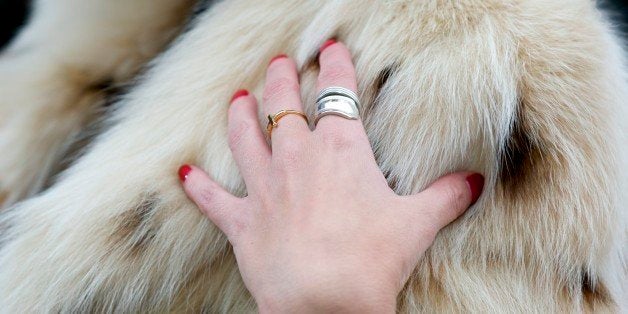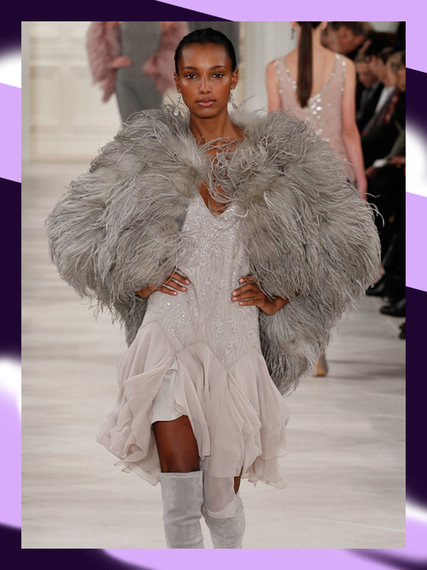
The arc of history bends towards progress, but for the fashion industry, change isn't progressing fast enough. As recent revelations that Hermes skins live alligators for their bags show, animals are being tortured and killed for fashion at an alarming rate. Leather is a staple and fur is one of the hottest crazes in the industry. As Racked recently pointed out, "isn't the year 2015 an odd time for fur to be such a major trend? Aren't we a bit too enlightened? Fur production often involves animal cruelty, not to mention environmentally harmful processes. Its growing presence in the luxury market just doesn't jibe with our era's emphasis on social and ecological consciousness." It's true. And weirder still, fashion is now full of vegans, so what the hell, how is fur making a comeback?
Fashion has long had a fascination with fur and the repercussions are scary. Long before the modern fast fashion era furs, leathers and other animal products were worn and used for practical reasons: warmth mainly, but also protection, durability and in some cases simply because other materials weren't readily available. That started to change in the 18th century when European aristocracy began wearing furs not for utilitarian purposes, but as a show of status and style. The late Victorian age saw a remarkable rise in demand for pelts, furs and even exotic leathers that has gone unsatiated since. In the process, every animal imaginable was skinned for its fur. Badgers, skunks, wolves, polecats, squirrels, musk ox, monkeys, raccoons, wombats, wallabies, tigers, leopards, even hamsters and house cats were skinned for their fur.
The trade was so lucrative and desire for the highest quality furs so intense, whole species including beavers, badgers, foxes, minks and wolves were driven to near extinction in Europe and even America. In response, animal lovers, vegans, and environmentalists began organizing. PETA launched aggressive and shock-oriented campaigns against the fashion industry.
And it worked. For twenty years, the sales of furs and exotic skins plunged. Until recently. In the past decade, furs and exotic skins are clawing back with deceptive rebranding of fur as 'ethical' and 'luxurious' targeted at young fashionistas. In 2011, sales of fur were worth £9 billion, a rise of more than 70 % in a decade leading to over 50 million animals being slaughtered on fur farms. And fur is once again mainstream fashion. In 2014, 70% of New York and British fashion week shows incorporated fur into their collections.
Will the latest Hermes gruesome scandal in which an undercover PETA activist videos thousands of alligators getting their backbones snapped and then being skinned alive for bags, change anything?
Fortunately there are many great fashion alternatives. Modavanti has an entire vegan section filled with fashion forward styles. Earlier this month, brand Hugo Boss announced it plans to go fur free by 2016, a pledge that iconic British designer Stella McCartney made years ago. Freedom for Animals, a New York based conscious purse brand, has become widely recognized as the Vegan Celine bag. Brave Gentleman is also fully committed. Stylish fur-free, vegan fashion has arrived. It's time for the rest of the fashion industry to catch up.
The arc of history may bend towards progress but in the fashion industry it needs a bit more of a correctional push.
